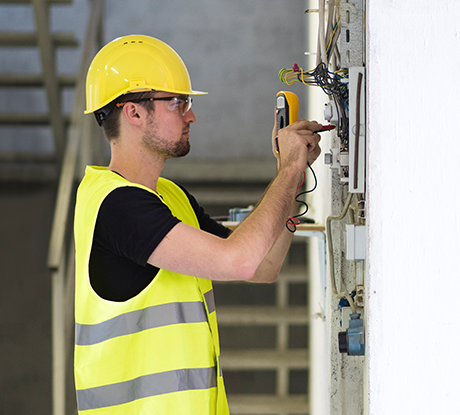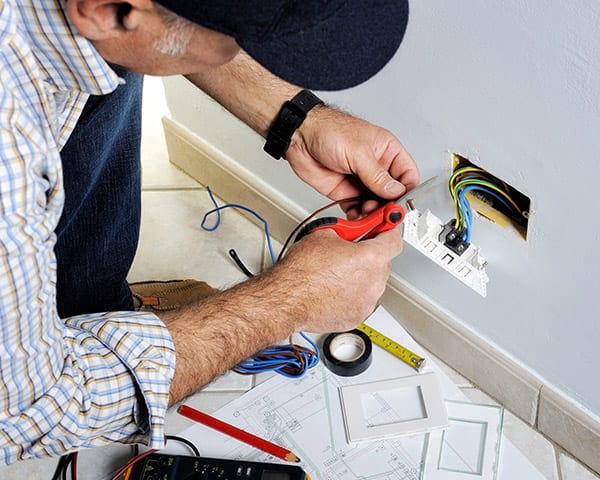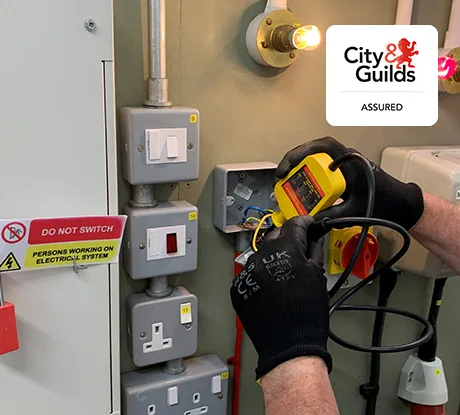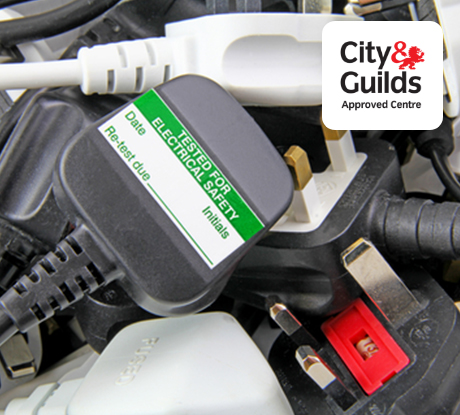We offer accredited and bespoke training courses, including City & Guilds Certified, City & Guilds Assured programmes. Our courses are designed for electricians and other electrical personnel from a basic level right up to advanced expertise.

Safe Electrical Control Panel Entry – A City & Guilds Assured Programme
This course is aimed at those responsible for assessing the risks associated with competent persons working within electrical control panels and other enclosures whilst it is energised for the purpose of fault finding, making adjustments and for electrical safety testing.

Electrical Principles Course – A City & Guilds Assured Programme
This course is aimed at those who require a basic understanding of electrical principles in order to allow them to further develop their skills in the workplace. On completion of the course, the delegate will have a solid understanding of basic circuit arrangements and component function.

City & Guilds 2382-22: Level 3 Award in Requirements for Electrical Installations 18th Edition BS7671: 2022 (1-Day Update)
This qualification is primarily aimed at those who have a good understanding of the IET Regulations but wish to update their certificate to cover the new 18th edition standards.

Introduction to HTM 06-02
This course is aimed at staff working within the National Health Service delivering front-line electrical maintenance and carrying out installation work, who need to be aware of the requirements of the Health Technical Memorandums that are applicable to what they do (Competent Person LV or LVCP).

City & Guilds 2393-10: Level 3 Certificate in the Building Regulations for Electrical Installations in Dwellings
This qualification is also suitable for anyone working in building trades who require a working knowledge of how electrical installations in dwellings can affect the building construction.

Guarding Machinery and Emergency Stop Systems
This course is aimed at those with responsibility for ensuring that machinery is safe to use.

Mechanical to Electrical Conversion
This course is aimed at those who have a mechanical engineering background and who have a need for basic up-skilling on electrical maintenance work.

Earthing & Bonding to BS7671
This course is aimed at those who need an understanding of the theory and design of earthing and bonding principles associated with low voltage installations for electrical safety.

Minor Electrical Works
This electrical minor works course is aimed at those persons involved in the modifications and repairs of existing electrical circuits and equipment that fall under the remit of the 18th Edition IET Wiring Regulations.

Safe Isolation of Electrical Energy and Proving Dead – A City & Guilds Assured Programme
This course is aimed at those who are actively involved in work on or near electrical low voltage systems and who need to carry out electrical isolation as part of this work.

Electrical Duty Holders – A City & Guilds Assured Programme
This course is aimed at those who have been informed or those who are aware that they have responsibility under Regulation 3 of the Electricity at Work Regulations 1989. The course is suitable for both electrical and non-electrical persons.

Electricity at Work Regulations 1989
This course is aimed at those who require an in-depth understanding of the general requirements of the Electricity at Work Regulations 1989 and how it affects their place of work and the work activities that they undertake. Particularly beneficial to Managers and Supervisors.

Electrical Safety Awareness
This course is aimed at those who need a basic awareness of the dangers associated with Electricity in the Workplace. This electrical awareness course is aimed at those who have little or no electrical experience.

Basic Electrical
This course is aimed at those who have little or no electrical experience, those with a little more experience looking to refresh their skills and those wishing to transfer mechanical skills to Electrical Services.

City & Guilds 2382-22: Level 3 Award in Requirements for Electrical Installations 18th Edition BS7671: 2022
This qualification is primarily aimed at practising electricians with relevant experience and other allied professionals e.g. surveyors, consultants and other trades needing to update and enhance their understanding of the IET Regulations.

City & Guilds 2377-77: Level 3 Award in the In-service Inspection & Testing of Electrical Equipment
This course is aimed at those who are responsible for electrical equipment, in particular those who undertake the in-service inspection and testing of electrical equipment.
